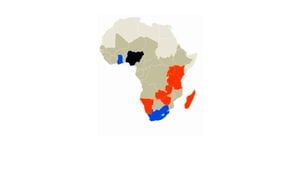Climate change is becoming harder to ignore, especially for those whose livelihoods depend on agriculture and food security. This sector is both significantly affected by climate change and, paradoxically, one of the major contributors to the crisis. Recent discussions and initiatives aimed at addressing the impacts of climate change on agriculture reveal the urgent need for sustainable practices and innovative financing solutions.
Farmers across the globe are feeling the heat—quite literally. Extreme weather events, shifting climate patterns, and long-term climatic changes are making traditional farming practices increasingly untenable. According to the Environmental Defense Fund (EDF), less than five percent of climate finance is currently allocated to agrifood systems, even though agriculture plays a substantial role in greenhouse gas emissions. Alarmingly, the United Nations Environment Programme (UNEP) estimates the world requires $350 billion annually by the end of the decade just to meet the urgent funding needs for climate adaptation and mitigation within food systems.
The COP29 summit, set to convene this year in Baku, Azerbaijan, presents an opportunity to reconsider global finance goals for climate action affecting food production. One of the key highlights of this gathering will be the New Collective Quantified Goal (NCQG), which aims to remedy the deficit of climate finance destined for low-income countries and, by extension, smallholder farmers who often bear the brunt of climate impacts without the necessary financial support to adapt.
Climate-smart agriculture is gaining traction as farmers explore ways to be more resilient. The concept revolves around three main goals: increasing productivity sustainably, enhancing resilience against climate shocks, and reducing greenhouse gas emissions. Techniques such as planting drought-resistant crops, adopting agroforestry methods, and improving livestock management are integral components of climate-smart practices. These strategies not only promise productivity but also offer pathways for mitigating the effects of climate change on ecosystems.
Take Zimbabwe, for example, where farmers like Gertrude Siduna are pivoting away from traditional maize cultivation—historically viewed as the staple crop—toward the more resilient chili peppers. Thanks to initiatives spearheaded by the U.S. Agency for International Development (USAID), farmers are being trained to adopt farming methods suited to the changing climate conditions. Siduna's shift to chili farming has not only ensured her family has food on the table but has also allowed her to generate around $400 from her farm, providing her with the financial means to procure staples like corn from local shops.
Meanwhile, farmers are exploring innovative water management strategies to cope with dwindling water sources. Community gardens equipped with solar-powered irrigation systems are sprouting up across Zimbabwe’s arid regions. This technology helps pump water from deep underground, providing reliable access to this precious resource without burdening the environment. Such initiatives empower communities by lessening their reliance on inconsistent rainfall.
Experts stress the importance of localization—understanding and leveraging local contexts—when itcomes to implementing solutions for climate impacts on agriculture. While the need for systemic change and increased financing is clear, it is just as important to empower local farmers and communities who possess valuable knowledge about their ecosystems. The initiatives introduced by organizations like the International Fund for Animal Welfare (IFAW) and USAID seek to establish sustainable practices like integrated pest management and improved livestock abilities, which together create more resilient agricultural systems.
For example, initiatives aimed at promoting agroforestry not only benefit farmers by improving soil quality and protecting crops but also serve wildlife habitats, aiding biodiversity conservation. Similarly, precision farming—which employs advanced technologies like satellite imagery and GPS—allows for optimal resource management, reducing waste and environmental damage.
Climate-smart farming also presents financial opportunities. According to reports, effective implementation could lead to higher incomes for farmers, particularly smallholders, as they adapt to and thrive under changing conditions. The potential for profitability is now being recognized alongside the evident need for sustainability.
Yet, the transition is not without challenges. A notable barrier remains the lack of quality climate finance—a reality highlighted by the EDF’s report, which discusses the need for funding to be accessible and impactful. The report advocates for financing structures to be built on principles such as accessibility, direct impact on farmers, and consideration of concessional loan rates appropriate to their low margins.
Currently, large-scale food aid donors, including the U.S., face scrutiny over how effectively they promote climate resilience. With both humanitarian need and the climate crisis intensifying, rich nations hold the responsibility to not just provide food assistance but to fund initiatives enabling sustainability and adaptation. USAID's strategy aims to mobilize $150 billion for climate-oriented advancements, focusing not only on immediate relief but also on long-term agricultural resilience.
Back in Alaska, the effects of climate change are prompting farmers like Josh Smith to experiment with crops once thought impossible for the state’s sub-Arctic climate. By focusing on hazelnut cultivation—which requires careful adaptation to extended growing seasons—Smith is contributing to Alaska’s food security and exploring innovative horticultural practices. Warming temperatures have gradually opened up new agricultural potentials, signaling larger shifts necessary for future food systems.
These examples collectively spotlight the urgent crossroads facing agriculture today due to climate change. Sustainable practices, innovative financing, and local adaptation strategies must go hand-in-hand to secure food systems and promote resilience. The key takeaway is clear: addressing the intersection of climate change and food security isn’t just about mitigating risks; it’s about empowering farmers, innovators, and communities to build pathways to long-term sustainability.
Through these collective efforts across various regions, from Zimbabwe to Alaska, humanity has not only the opportunity to respond to climate challenges but also the responsibility to enact changes conducive to life both on Earth and for future generations.



